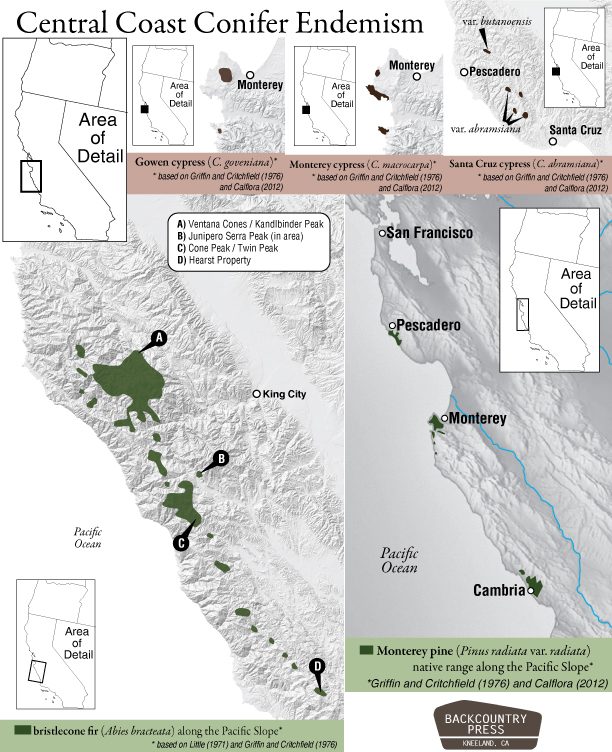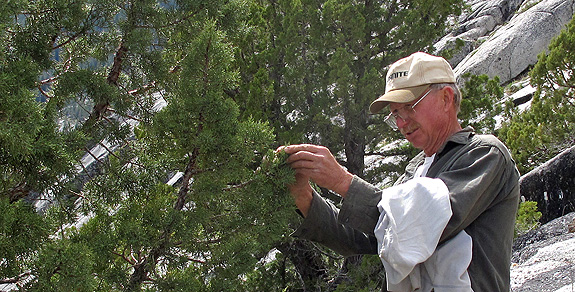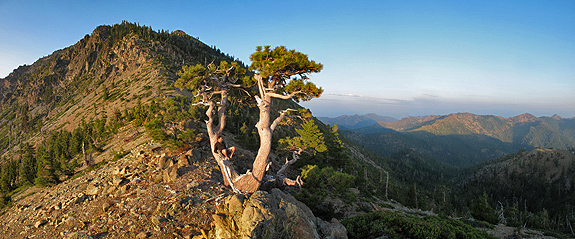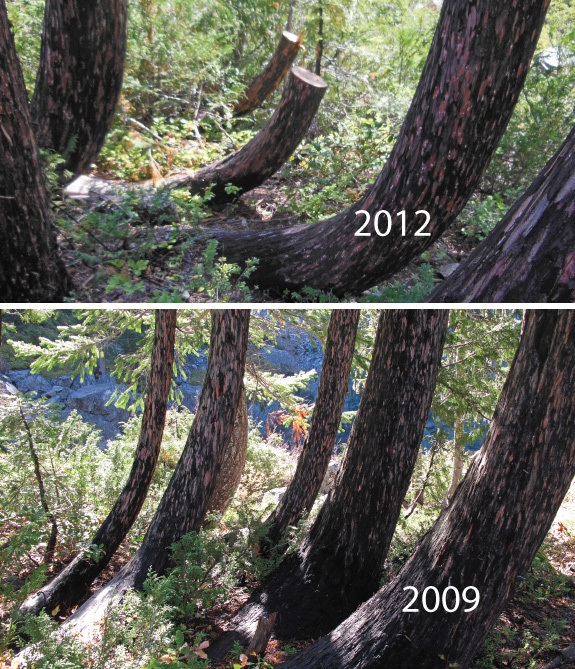Original Publication DATE: 1/19/2013
On the divide between the South Fork of the Eel River and Mattole River exists a place I had repeatedly mapped while creating the images for for Conifer Country. I knew there was a small patch of serpentine in this isolated location because of the occurrence of two tree species that are uncommmon on the North Coast outside of the Klamath Mountains proper. In the past I had asked regional ecologists about this location and the common response was “its is somewhere out near the Mattole River.” I knew that already, but how could I find the exact location?
The mystery was solved when Kyle and Dana Keegan, offered a “visit to the Salmon Creek watershed which is a tributary of the South Fork Eel. We have an especially unique diversity of plants and trees here due to a complex melange of geologic features with what we believe to be the largest, most westerly stand of Jeffrey Pine in the state, as well as vast stands of Incense Cedar. Kinda like an isolated westerly chunk of the Klamath Siskiyous–with it comes a whole host of serpentine endemics.”
Yes please…
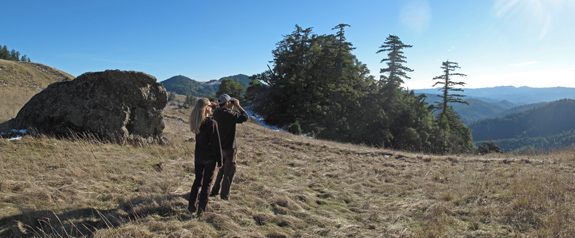
Continue reading “Serpentines of the Salmon Creek-Mattole River Divide”
